
Amanoa is a genus from the family Phyllanthaceae first described as a genus in 1775. It is native to South America, Central America, the West Indies, and tropical Africa.
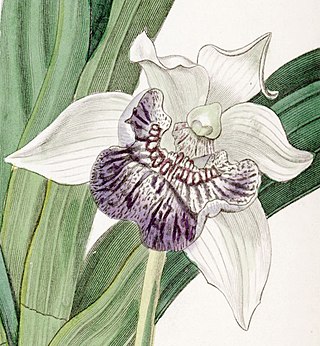
The genus Cochleanthes is made up of 4 species of orchids native to Mexico, Central America, the West Indies and South America. The name Cochleanthes refers to the shape of the flower.

Acidoton is a genus of plant of the family Euphorbiaceae first described as a genus in 1788. It is native to the Greater Antilles, Central America, and tropical South America.
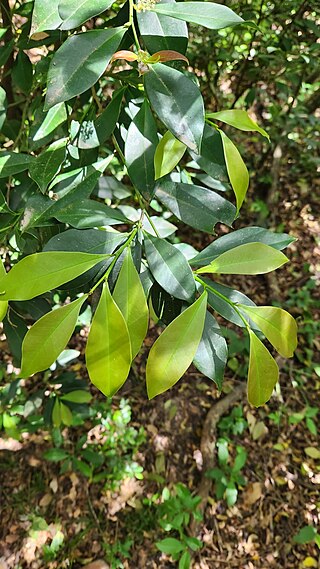
Actinostemon is a plant genus of the family Euphorbiaceae first described as a genus in 1841. It is native to South America, Central America, and the West Indies.
Nelson José Pinto Freire was a Brazilian classical pianist. Regarded as one of the greatest pianists of his generation, he was noted for his "decorous piano playing" and "interpretive depth". His extensive discography for labels such as Sony Classical, Teldec, Philips, and Decca has garnered awards including the Gramophone Award and Diapason d'Or. Freire appeared as soloist with the world's most prestigious orchestras, including the Berlin Philharmonic, the London Symphony Orchestra, the Royal Concertgebouw Orchestra and the New York Philharmonic. He played and recorded piano duo music with Martha Argerich, a long-time musical and personal friend.
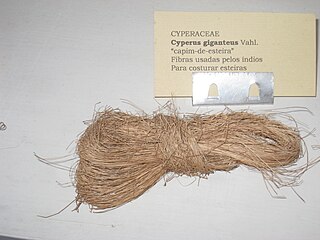
Cyperus giganteus is a perennial herbaceous plant. It belongs to the genus Cyperus. Its native range extends from Jalisco in west-central Mexico as far south as Uruguay, and also grows on some islands in the Caribbean. The species is sparingly naturalized in eastern Texas and southern Louisiana.

João Barbosa Rodrigues was considered one of Brazil's greatest botanists, known especially for his work on orchids and palms. For nearly two decades he was director of the Botanic Garden of Rio de Janeiro. Something of a polymath, he was a prolific botanical artist who also made contributions to his country's ethnography, geography, linguistics, zoology, and literature. The standard author abbreviation Barb.Rodr. is used to indicate this person as the author when citing a botanical name.

Campomanesia is a genus in the family Myrtaceae described as a genus in 1794. It is native to South America and Trinidad.
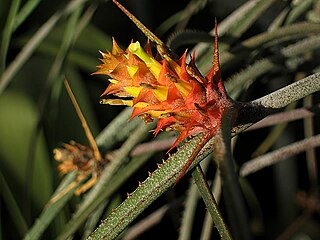
Acanthostachys is a genus of the botanical family Bromeliaceae, subfamily Bromelioideae. The genus name is from the Greek “acanthos” and “stachys”.
Cottendorfia is a genus of plants in the family Bromeliaceae. The genus name is for Johann Georg Freiherr Cotta von Cottendorf, German patron of the sciences (1796-1863).
João Geraldo Kuhlmann was a Brazilian botanist.

The Brazilian snake-necked turtle, locally known as cágado da serra, and also commonly known as Maximilian's snake-necked turtle, is a species of turtle in the family Chelidae. The species is endemic to southeastern Brazil. It is one of the smallest Brazilian freshwater turtles reaching a maximum straight carapace length of 20 cm (7.9 in). The species prefers streams with sandy and rocky bottoms and clear water in forests above 600 m (2,000 ft) elevation.
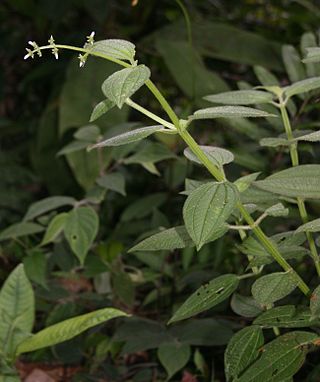
Aciotis is a genus of flowering plants in the family Melastomataceae. There are about 13 species distributed from Mexico to Brazil.

Ctenanthe is a genus of flowering plants of the family Marantaceae described as a genus in 1884. They are evergreen perennials, native to Central and South America. They are grown for their attractive, often variegated foliage. They are frost tender, requiring a minimum temperature of 13 °C (55 °F).

Cycnoches haagii is a species of orchid native to tropical South America.
Eryngium ombrophilum is a plant species native to Brazil, the type specimen collected there from the State of Paraná.
Philodendron duckei is a plant species native to the French Guiana, Suriname and Brazil but cultivated as an ornamental elsewhere.
Cissus anisophylla is a plant species known from lowland rainforests of Panama, Colombia, Brazil, Peru, Costa Rica, Ecuador, and the Mexican state of Chiapas.
Mikania oreophila is a plant species native to southern Brazil. It has been collected from highland areas in the States of Rio Grande do Sul, Paraná, Santa Catarina and São Paulo from elevations up to 1300 m.
Nymphaea belophylla is a species of waterlily native to Bolivia, Brazil and Venezuela.











